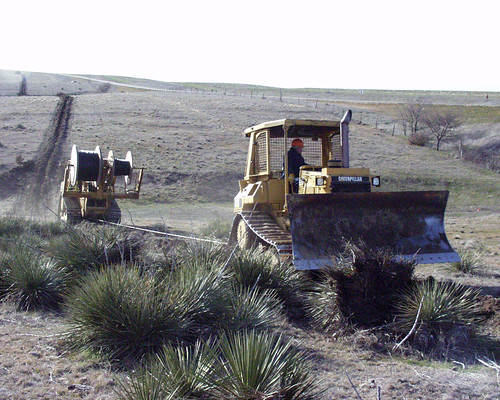
In the days of the Great Depression, the National Recovery Act had as part of its focus the development of rural America. The primary initiatives of that era were development of electrical and telephone systems throughout the nation.
Likewise, the current American Recovery and Reinvestment Act of 2009 has a package of benefits designed to create an economic stimulus that is both immediate and long-lasting.
Funding of projects through U.S. Department of Agriculture Rural Development is being coordinated with the Federal Communication Commission's new National Broadband Plan that will boost Internet capabilities in education, healthcare, homeland security and other issues.
The plan's primary goal is to have at least 100 million U.S. homes with affordable access to actual download speeds of at least 100 megabits per second and actual upload speeds of at least 50 megabits per second by 2020, to expand the wireless spectrum by 500 million megahertz by 2020, and to provide affordable access to robust broadband service and the means and skills to subscribe if they so choose.
At a more wide-ranging level, the plan seeks to bring 1 gigabit per second broadband service to anchor institutions such as schools, hospitals, and government buildings, to allow every emergency first responder access to a nationwide, wireless, interoperable broadband public safety network and enable them to use broadband to track and manage their real-time energy consumption.
"The anchor institutions will create a way for more people to be exposed to broadband. You hope from these institutions it will spill downward into use in the homes and small businesses," said Mark Wigfield, FCC spokesman for the National Broadband Plan.
Because of relatively low population density, topographical barriers, and greater geographical distances, the FCC has determined that broadband service may be more difficult to obtain in some rural areas. The way to fix this is to make broadband service profitable for providers.
To do this, USDA-RD's Rural Utilities Service provides four programs to finance rural America's telecommunications infrastructure.
-The Broadband Loan Program provides loans to fund the costs of constructing, improving and acquiring facilities to provide broadband service to eligible rural communities.
-The Distance Learning and Telemedicine Program brings electronic educational resources to rural schools and improves healthcare delivery in rural America.
-The Community Connect Grant Program provides financial assistance to eligible applicants that will provide broadband in unserved areas to provide public safety services and foster economic growth.
-The Telecommunications Infrastructure Loan Program provides loans to finish and improve telecommunications service in rural areas.
These programs lately have often been tied together with grants from the ARRA to create packaged deals that can meet the needs of service providers who want to build out these sorts of systems.
Likely one of the largest loans, combined with a grant courtesy of the Recovery Act, went to Rural Telephone Service Co., of Lenora, Kan., and its Hays, Kan.-based subsidiary, Nex-Tech, Inc. The company was the recipient in January of a $49,588,807 grant and $51,612,842 loan. This will enable the development of broadband services in unserved and underserved areas of central and western Kansas.
The Rural Telephone/Nex-Tech project will impact 21 towns and 26 rural areas spanning over 4,600 square miles in Kansas. When completed, this expanded network will provide high-speed services to nearly 23,000 households and businesses within the company footprint, including 335 community anchor institutions such as schools, libraries, hospitals, clinics, county health agencies, law enforcement agencies, senior and disability centers.
Posted with permission from the High Plains Journal.
